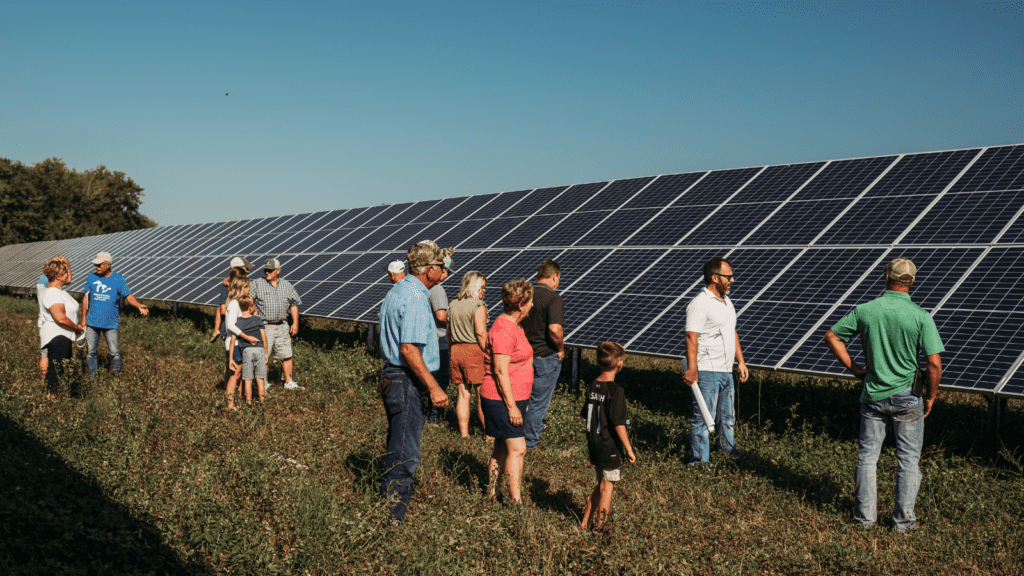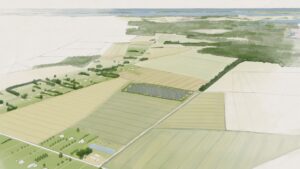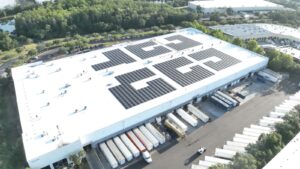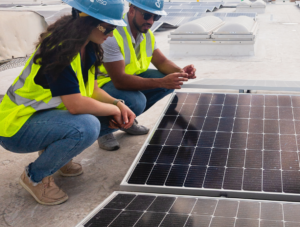What is a solar farm?
A solar farm is a large collection of solar panels that soak up energy from the sun and convert it into electricity. This electricity goes into the power grid to be distributed and is used by customers. These solar panels are usually mounted to the ground and can be of different sizes and shapes. At ESA, we develop the two most common types of solar farms: Community solar and Utility-Scale Solar.
What is community solar?
Community solar refers to a setup where multiple people share the benefits of a single solar energy system. Instead of each individual having solar panels on their own property, a larger solar array is installed in a central location, such as an open field.
The electricity generated by the shared solar system is then distributed to participants, also known as subscribers, either as credits on their electricity bills or as a direct energy supply, helping them save on their energy costs.
Community solar is particularly beneficial for those who can’t install solar panels on their property, like renters or people with shaded roofs. It enables a group of individuals to collectively support clean energy and receive the advantages of solar power.
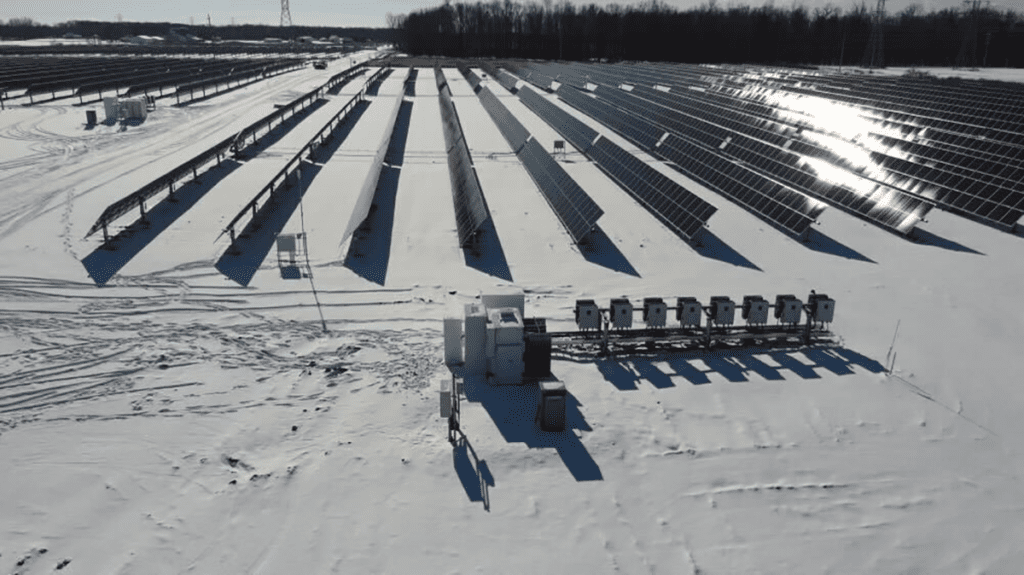
What is utility-scale solar?
Utility-scale solar refers to large solar power installations designed to generate a substantial amount of electricity. These solar installations are characterized by their significant capacity, typically ranging from several megawatts (MW) to hundreds of megawatts.
Utility-scale solar projects are usually built to supply power directly to the electrical grid, rather than for on-site consumption. They involve the installation of a vast number of solar panels over a large area of land. These projects are commonly undertaken by utility companies, energy developers, or independent power producers and contribute significantly to meeting the energy demands of regions or communities.
How does a solar farm work?
Solar farms use empty land, mostly farmland. The panels are put on this land to turn sunlight into electricity, which goes into the power grid. Depending on the type of solar farm, the local power company pays the landowner for the electricity their solar farm makes.
Solar farms follow similar rules as rooftop solar panels for businesses. The difference is that solar farms are much bigger and use a lot of land to make and sell power to the local utility companies to make money. People are still learning about the impact of solar farms on the environment.
Solar farms can have a positive impact on the decarbonization of the electric grid by helping to reduce our reliance on fossil fuels, a major source of greenhouse gas emissions. They provide clean energy, create jobs, and boost the economy in local communities. A shift away from fossil fuels can improve air quality and reduce our exposure to harmful pollutants.
Types of solar farms Two kinds of solar farms exist: Community Solar Farms and Utility-Scale Solar Farms. The key contrast between these lies in their customer groups and size.
Utility-scale solar farms also primarily benefit public utility providers, whereas community solar farms aim at businesses, homeowners, and renters. A Utility-scale solar design is also much larger than a community solar farm design.
Below is a comparison table that compares community solar farms with utility-scale solar farms.
| Community Solar Farm | Utility Scale Solar Farm |
| Electricity is directly offered to customers to purchase. | Electricity is directly sold to utility companies. |
| Size ranges between 10-20 acres of land. | Size can be up to 3,000+ acres. |
| Can typically generate up to 5 MW of energy | Can typically generate up to 50MW of energy |
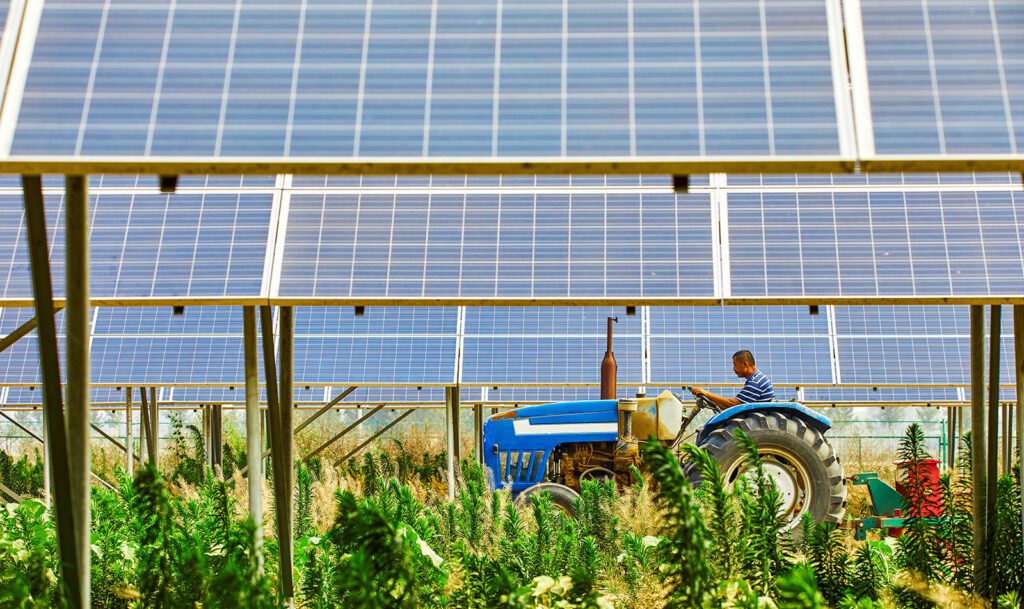
Benefits of solar farms
Solar farms make safe and locally sourced energy. They offer multiple advantages for landowners who are looking to turn their land into a solar farm.
- The land of solar farms can create improved habitats for animals and plants, often featuring grassy areas that allow local wildlife to safely move among the rows of panels. This concept is called Agrivoltaics.
- Solar farms yield a strong return on investment, leading to potential electricity bill savings and low maintenance costs.
- Most solar panels installations lack moving components; instead, the parts they contain are situated within sound-proof enclosures. Noise is rarely a concern within solar farms.
- Solar farms contribute to lower carbon emissions, producing clean energy without environmental harm.
How much land do you need for a solar farm?
Community Solar Farm
A community solar farm typically demands 10-20 acres to operate efficiently. These farms are designed to serve the energy needs of a local community or group of participants.
The exact amount of land required for a community solar farm varies depending on the size of the farm and the efficiency of the solar panels. The ideal geographic conditions for a solar farm include:
- Abundant sunlight
- Flatopen land
- Access to the electrical grid
Solar farms can be built in a variety of locations, but they are most commonly found in areas with abundant sunlight. The land for a solar farm should be flat and open, with good access to the electrical grid. Some community solar farms benefiting more urban areas can be built on rooftops or in parking lots.
Utility-Scale Solar Farm
On the other hand, a Utility-Scale solar farm necessitates a more substantial land area, typically around 30-40 acres or more. These large-scale installations are optimized for generating significant amounts of electricity that can be fed into the broader power grid.
It’s important to note that the required land area can vary based on factors such as the efficiency of the solar panels, the local climate, and the energy demands of the region.
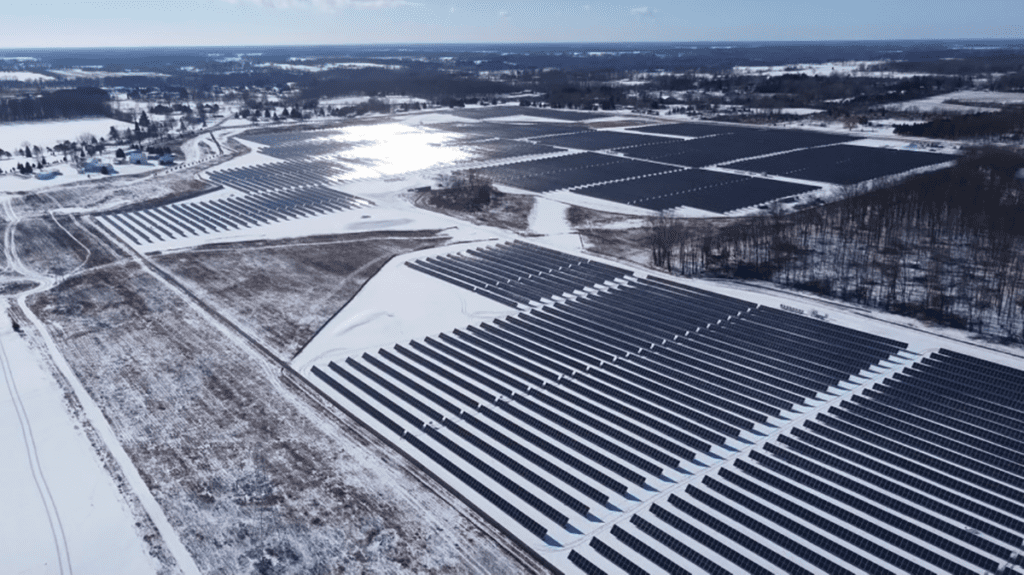
How do solar farms make money?
Solar farms make money by producing energy for the grid. Energy companies pay businesses and landowners for the energy they provide. This arrangement benefits both sides: the solar farms contribute to the energy supply while earning the landowner income.
Solar farms can also receive government tax incentives to help offset the cost. Any extra energy can be sold back to the grid when more is produced than needed. This helps both big companies and landowners earn money while supporting clean energy.
Developing solar farms projects is a multi-year process, and landowners can make money by leasing their land to companies like ESA throughout this process.
How much does a solar farm cost?
Solar farm installation costs typically range from $0.89 to $1.01 per watt. For a solar farm generating 1 megawatt (MW) of electricity, the installation expense would fall within the span of $890,000 to $1.01 million.
However, these costs can vary based on factors such as location, equipment quality, and installation complexity. Despite the initial investment, solar farms stand to deliver attractive returns over time, thanks to the revenue generated from electricity sales and potential incentives.
How long does it take to build a solar farm?
The duration of constructing a solar farm varies based on project size and workforce. Generally, a solar farm can be fully built in a matter of months. However, the process of selecting a site and obtaining permits is a lot more complicated. This phase can require 3 to 5 years to finalize all the essential agreements and authorizations for a solar farm.
Once construction is finished and the solar farm is operational, its maintenance demands are minimal, typically necessitating servicing around 3 to 4 times annually. Most solar farms can produce electricity for 2 to 3 decades.

How to start a solar farm?
Starting your own solar farm on your land is a smart choice. It helps promote clean energy and provides affordable power to communities. Even if you can’t build or manage it yourself, you can lease your land for a solar farm, still supporting the environment while making money. This is the preferred method of starting a solar farm. Landowners who have leased their land to solar developers enjoy a steady recurring income without any of the hard work that comes with running a farming operation. It’s all possible with the power of the sun.
